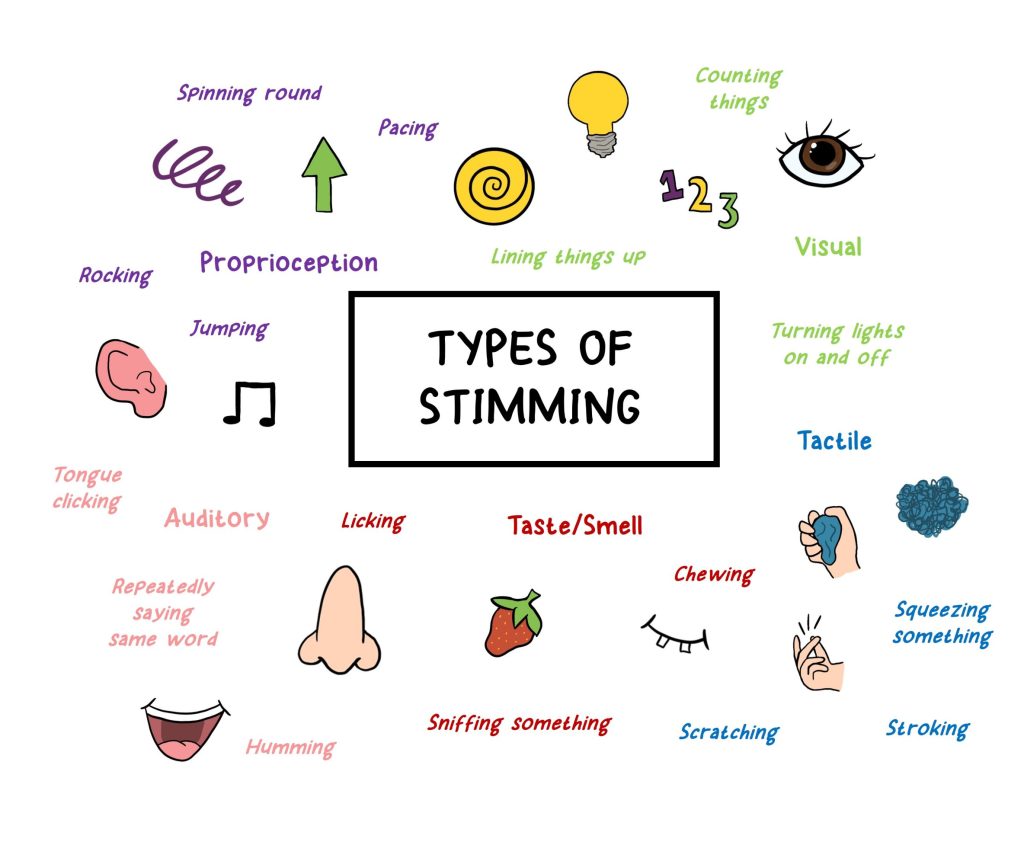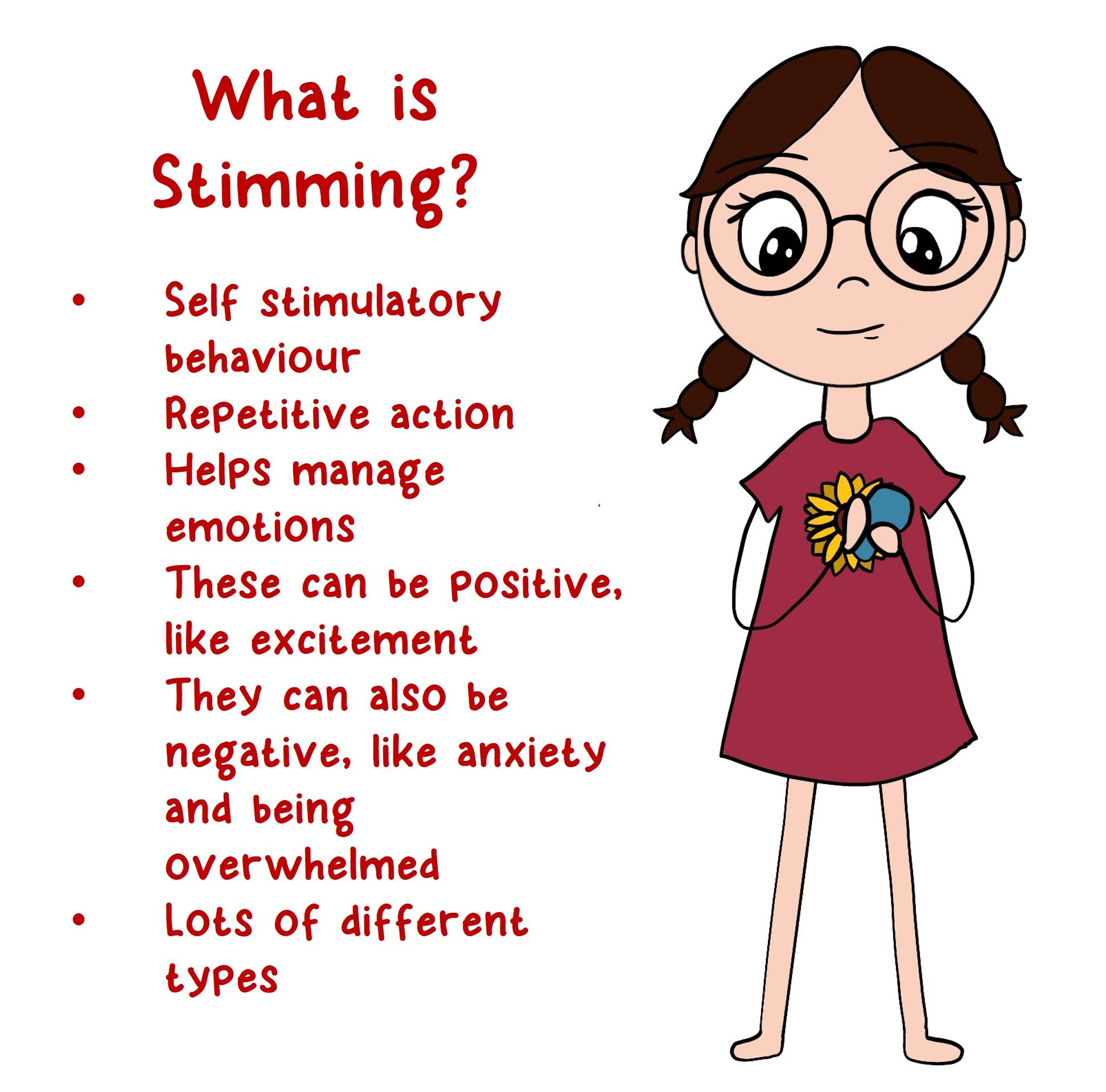Stimming – a term for self-stimulating behaviour – is any kind of repetitive action used to help manage emotions. These can be negative emotions, for example as a way of calming down from anxiety, stress, or being overwhelmed, or to express excitement that it might feel difficult to otherwise express. Many autistic individuals will have different stimming behaviours that they find helpful!
If you want to think about it more scientifically, it manages overwhelming sensory information that can be difficult, particularly if you’re neurodiverse, to process. For autistic individuals that are oversensitive to sensory information, focusing on one thing helps to reduce the ‘sensory overload’. If you are undersensitive to the particular sensory information or environment, it can stimulate the ‘underactive’ senses.
I’ve noticed how I naturally engage in stimming behaviours at times, but it’s only recently that I’ve appreciated all the different types of stimming – which has made me understand more why I do act a certain way in certain situations. It’s easy to reduce stimming to only the most ‘obvious’ or most stereotyped behaviours, such as hand flapping, when actually there are numerous forms, including:

- Tactile – rubbing hands together, squeezing something, leaning on something, banging one’s head against something, feeling a certain fabric repeatedly, stroking something, scratching or picking something.
- Auditory – repeatedly saying the same word or making the same sound, listening to the same noise or song on repeat, humming, clicking fingers, clapping, whistlng, tongue clicking.
- Taste/smell – sniffing an object, licking or chewing something.
- Proprioception – spinning round, rocking, throwing objects, pacing, jumping, rolling.
- Visual – staring at moving objects or even non moving objects, repeated blinking, turning lights on and off, lining things up in a certain arrangement or order, picturing certain things.
Stim toys are a really useful way of engaging in stimming behaviours that work for you, and there are LOTS of different types. One day maybe I’ll make a post on my favourite ones, or my recommendations for each form of stimming! It’s a very individual choice, and for a long time I assumed if I didn’t stim in a typical way, they wouldn’t be useful, but I’ve now found stimming toys that maybe are less famous/stereotyped, but help me a lot!!
What stims do you find most helpful?

Leave a Reply